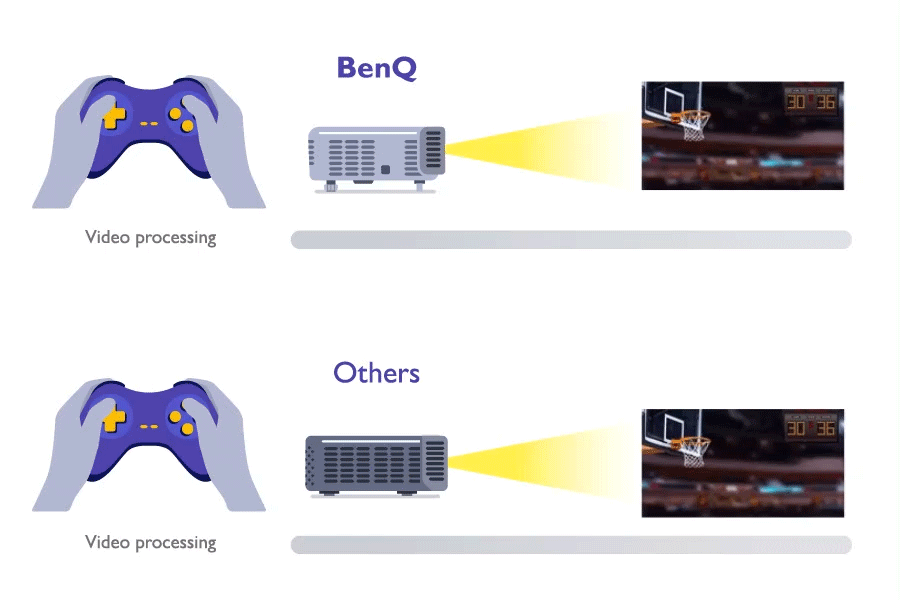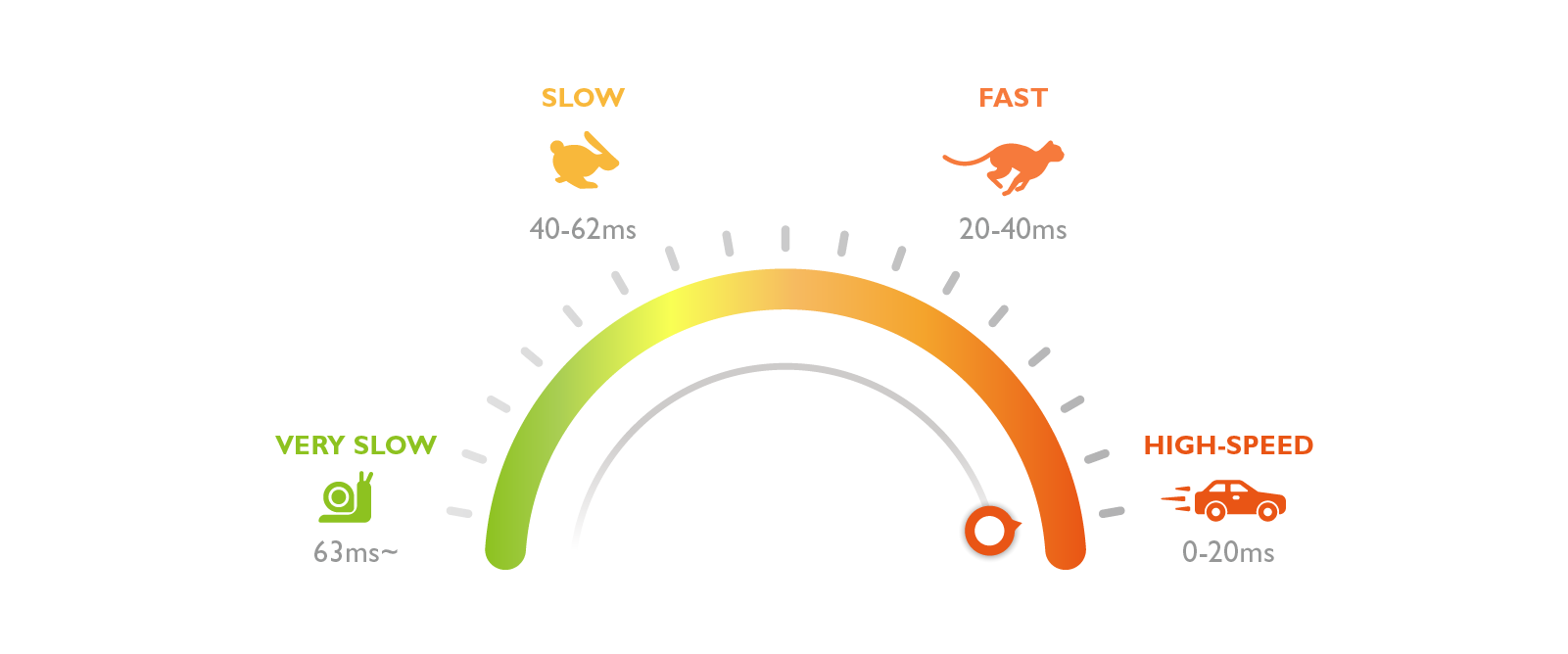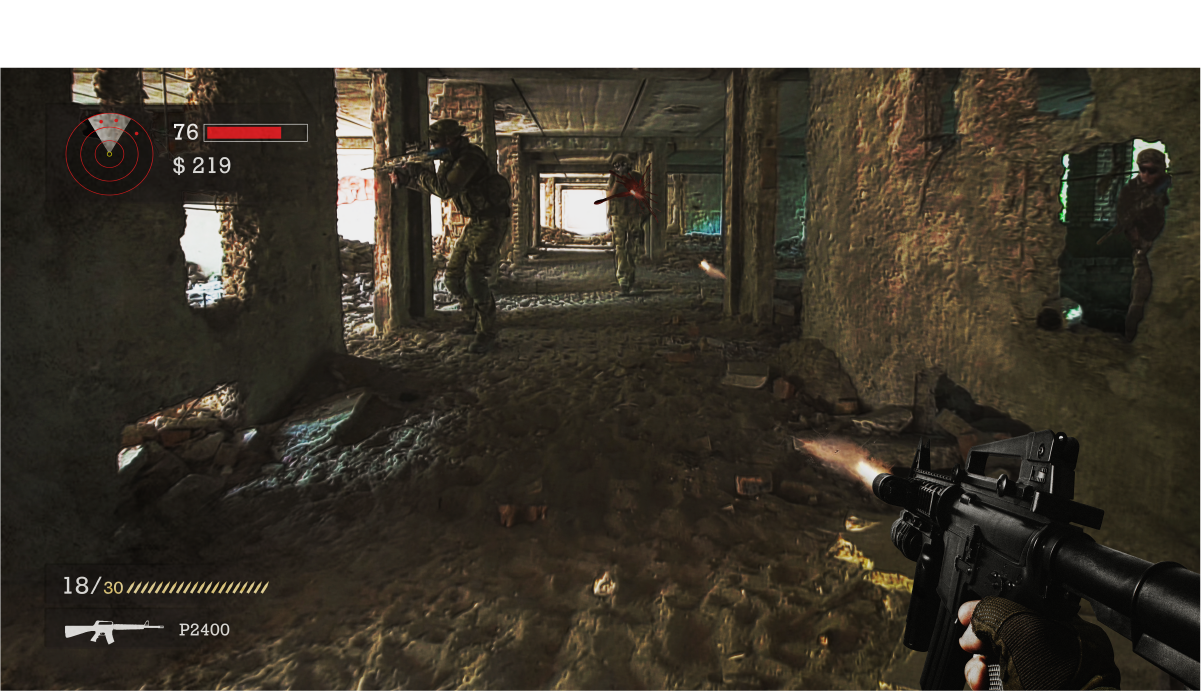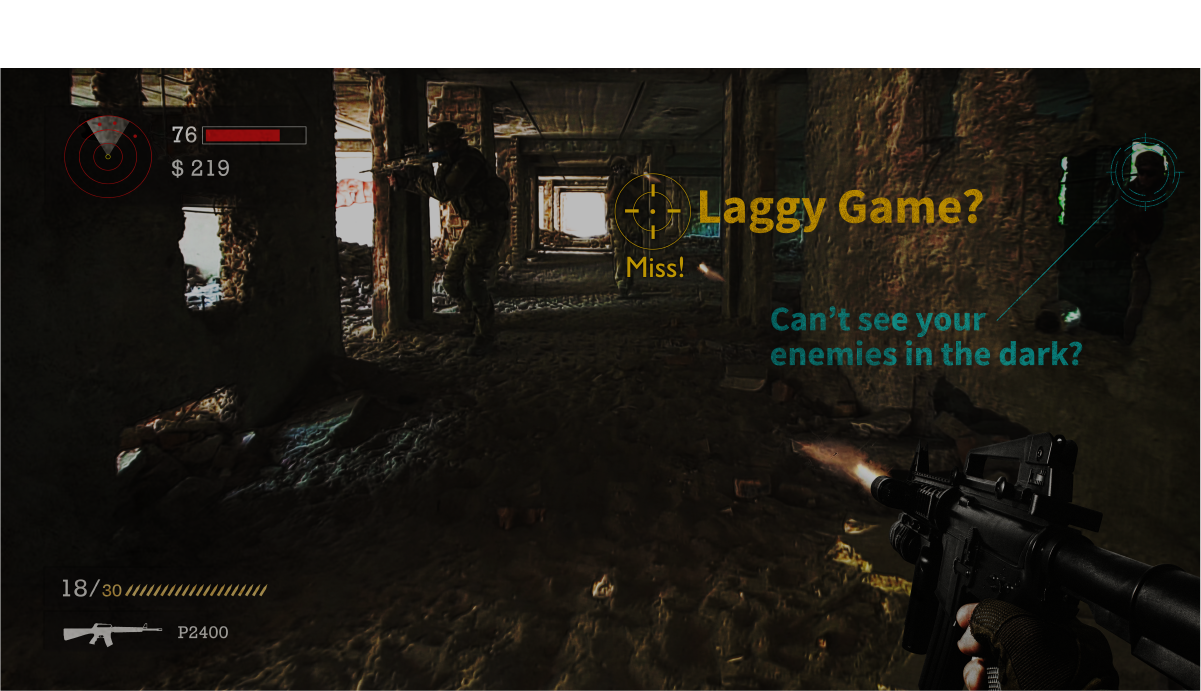

Yes, the projector has input lag, or latency. However, a new-gen gaming projector with 1 frame latency does 1080p at 240Hz / 120Hz with a mere 4ms / 8ms of lag time or 4K 60Hz with just 16ms of input latency, which is very competitive with even the fastest TVs.
For serious gamers, success boils down to the split-second decisions you make on the fly. Because of this, gamers need to ensure that nothing gets in the way of their decision making, including the gear they use for their gaming setup. From accessories to hardware, hardcore gamers are already accustomed to seeking out the highest performing equipment they can find, and the same goes for their display solutions.
When it comes to gamers who are seeking out a more immersive experience though, there has been a growing movement away from traditional TVs/displays in favor of gaming projectors. For these gamers, when looking for the ideal projector one of the main criteria used to judge the performance of a projector is its input lag.
But what exactly is input lag? How do you measure input lag on a projector? How can you reduce input lag on your projector? Is input lag the be-all and end-all for judging the performance of a projector? These are the questions this article will seek to answer.

Input lag, or latency, for projectors refers to the time between when the audio/video signal from the input source (the gaming console) is received by the projector and when the projector actually projects the video that corresponds to that signal, which can cause things such as lag time or image stuttering. Because of this phenomenon and how it may affect your ability to play at the highest level, low input lag time is one of the key things to focus on when determining whether a projector will boost or hamper your gaming abilities, as you want a projector that instantaneously projects the video that the console is transmitting to it so as to make sure that you’re able to make those split second decisions.
It’s worth noting that input lag time is somewhat different then response time. Response time in gaming refers to the duration of time between when a button is pushed on a controller and when the character performs the corresponding action and thus involves all the hardware involved in the gaming setup, while input lag time refers only to the part of the equation involving the input signal and projector.

With an understanding of what input lag is, the next step is to figure out how input lag is measured and how this knowledge can be applied to choosing a gaming projector. For most gaming projectors, input lag time is listed in its product specs using milliseconds (ms) as the unit of measurement, so for a projector with a listed input lag time of 16 ms there will be a 16 millisecond gap between when the signal from the gaming console is received by the projector and when the resulting image is projected. For some this may seem like just a sliver of time, but for serious gamers it could be a matter of life or death (figuratively of course). The calculations used to derive the value itself is a result of the projector’s resolution and refresh rate, along with the engineering of the projector. As a result, most specs that list the input lag time will also list the conditions in which that value was measured, including resolution, refresh rate, and any corresponding video modes used, all of which gamers should take into consideration when comparing projectors.

Likewise, refresh rate, or refresh frequency, is another useful concept when judging the performance of a projector. Strictly speaking, refresh rate is the rate at which a projector projects the images or frames in a video broadcast. You can think of it as essentially the frame rate for a projected video. Whereas frame rate is usually measured in frames per second (FPS), refresh rate is measured in hertz (Hz), but both are pretty much the same thing. So, in other words, a projector with a refresh rate of 120Hz projects 120 frames every second. Why refresh rate is an important measure for a projector’s performance is because a higher refresh rate, i.e. a greater number of frames projected per second, means a video with cleaner, smoother motion and less blur.
Given the knowledge of how input lag time is measured and how it can be identified in a projector’s specifications, how then is a user supposed to ensure that the projector they’ve purchased achieves the input lag time advertised in its specs. A sizeable amount of gaming projectors on the market feature a pre-configured fast mode that helps reduce input lag when it is enabled. It’s recommended that when shopping for a projector, gamers double-check to see if their prospective purchase features such a mode, and once purchased that they activate the mode prior to gaming. Beyond that, it is also highly recommended that gamers further boost their projector’s speed by turning off any additional image processing functions such as keystoning, aspect ratio manipulations, and overscanning. Doing this will further complement the fast mode feature and ensure that your projector is working at its fastest speed possible.
Despite all the discussion above regarding input lag, there are also plenty of other considerations to make when purchasing a gaming projector, especially if you are doing so in order to create a more immersive gaming experience. This includes attention towards the color accuracy, overall image quality, and rendering of details by the projector. For BenQ this has led to the development of our gaming suite of features. BenQ gaming series combines features such as special video/sound modes and detail adjustments designed specifically for different gaming genres coupled with a high-performance fast mode that reduces input lag to a minimum.


{{title}}
We will notify you when we have more.
We will send you an email once the product become available.Your email will not be shared with anyone else.
Sorry, our store is currently down for maintenance.We should be back shortly. Thank you for your patience!